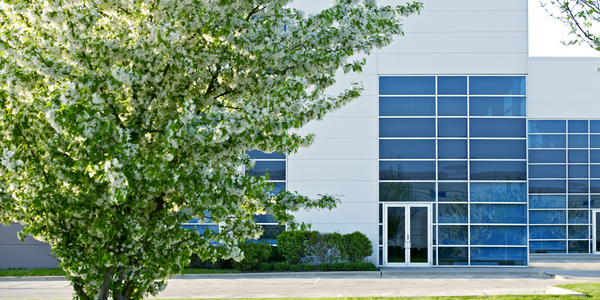Technology Category
- Platform as a Service (PaaS) - Application Development Platforms
Applicable Industries
- Cement
Applicable Functions
- Sales & Marketing
Use Cases
- Retail Store Automation
- Time Sensitive Networking
About The Customer
The customer in this case study is the Philadelphia 76ers, a top NBA franchise under Harris Blitzer Sports & Entertainment (HBSE). HBSE is a leading sports and entertainment company, focused on franchises, brands, and venues centering around the Philadelphia 76ers, the New Jersey Devils, and the Prudential Center. HBSE’s mission is to utilize their platforms to unite, uplift, and drive change around where their teams perform. The 76ers were seeking a solution to better understand and manage their complex data ecosystems, which included online advertising platforms, ticketing systems, and audience engagement data.
The Challenge
The Philadelphia 76ers, a top NBA franchise under Harris Blitzer Sports & Entertainment (HBSE), faced a significant challenge in managing their complex data ecosystems. These ecosystems included online advertising platforms, ticketing systems, and audience engagement data. The data team was tasked with managing and aggregating 130 diverse data sources into an Excel spreadsheet, a process that was chaotic, overwhelming, and time-consuming. It took the team 10 hours a week just to extract the data and up to a few weeks to connect to a new data source. The urgency of this task was further amplified by the fixed timelines of the events-driven industry, necessitating the ability to pull and manage data quickly.
The Solution
The 76ers partnered with Adverity to streamline their data management process. Adverity provided a single solution to modernize and bring order to the scattered and inefficient data process. This led to an increase in data operations productivity, allowing the team to dedicate more time to discovering high-value insights to drive the business forward. The data team used Snowflake’s infrastructure to store data fetched with Adverity, which was then harmonized before being sent to Tableau for reporting. Adverity also enabled the 76ers to quickly connect to new data sources through a simple plug-and-play method, bringing automation to the forefront of their data operations and minimizing mistakes.
Operational Impact
Quantitative Benefit

Case Study missing?
Start adding your own!
Register with your work email and create a new case study profile for your business.
Related Case Studies.

Case Study
System 800xA at Indian Cement Plants
Chettinad Cement recognized that further efficiencies could be achieved in its cement manufacturing process. It looked to investing in comprehensive operational and control technologies to manage and derive productivity and energy efficiency gains from the assets on Line 2, their second plant in India.

Case Study
Digital Transformation of Atlanta Grout & Tile: An IoT Case Study
Atlanta Grout & Tile, a Tile, Stone & Grout restoration company based in Woodstock, Georgia, was facing challenges with its traditional business model. Despite steady growth over the years, the company was falling behind the web revolution and missing out on the opportunity to tap into a new consumer base. They were using independent software from different vendors for each of their department information and workforce management. This resulted in a lot of manual work on excel and the need to export/import data between different systems. This not only increased overhead costs but also slowed down their response to clients. The company also had to prepare numerous reports manually and lacked access to customer trends for effective business decision-making.

Case Study
Revolutionizing Construction Equipment Rental: A Case Study on ProsRent and ENO8
ProsRent, a startup that won the 'Best Financial Opportunity' and 'Best Pitch' at CodeLaunch 2016, aimed to revolutionize the way construction professionals source and rent heavy equipment. In the construction industry, project managers and contractors typically rent heavy equipment from supply companies. However, predicting inventory can be challenging, and finding the required equipment at the right time and place can be a hassle. If the preferred vendor doesn't have the required equipment, it results in wasted time and money in searching for it, often leading to higher costs due to non-preferred rates and increased delivery costs if the vendor is located far from the job site. Suppliers, on the other hand, desired access to a wider base of trusted renters that they didn't have to vet themselves and wanted to offer dynamic rental pricing based on demand and availability in their market. ProsRent's challenge was to produce a minimum viable product that was fast and first to market but also strong enough to engender loyalty and repeat business from the target market.

Case Study
AI-based Automation for Commercial Office HVAC: A Verdigris Case Study
Modern buildings are required to run longer hours, support a variety of end uses, and contribute to higher levels of economic productivity, leaving a thin margin for error. However, even the most advanced building and environmental control systems have failed to adequately support facilities and operations management. Buildings are often inefficient and the people using them are underserved. To meet occupant comfort and maintain cost and energy efficiency, a dynamic, AI-assisted approach is needed.

Case Study
Revamping EE's Legacy ERP: A Case Study on BT's Strategic Transformation
EE, even after its merger with BT, was operating its ERP estate on legacy infrastructure, hosted on the premises of a third-party supplier. This outdated system resulted in a volume-based operational model, higher time to market, longer delivery cycles, and unsatisfactory customer experience. BT recognized the need for a strategic transformation of these aging ERP systems and sought a partner who could proactively manage application services. The partner was also expected to handle development requirements associated with application management services, drive accountability, and ownership with a time and target-driven transformation of these services. BT's primary goals were to improve customer experience, reduce cycle time, and measure these improvements with precision.








